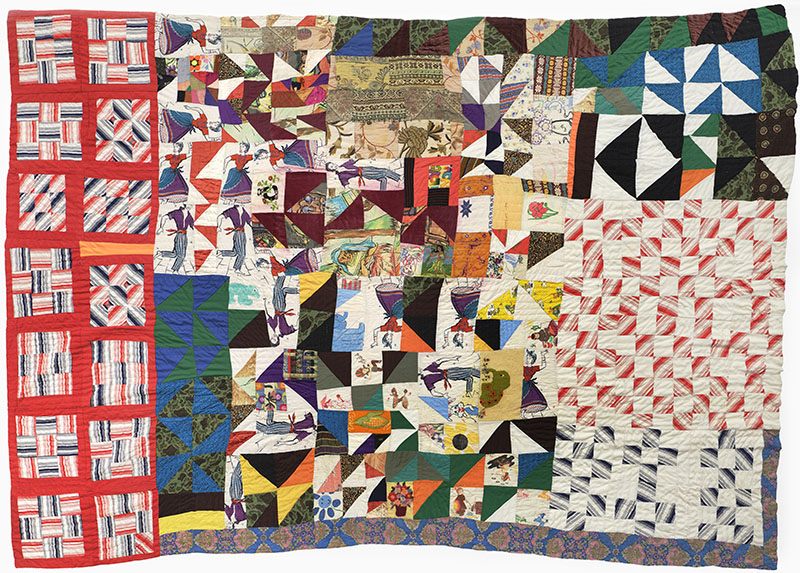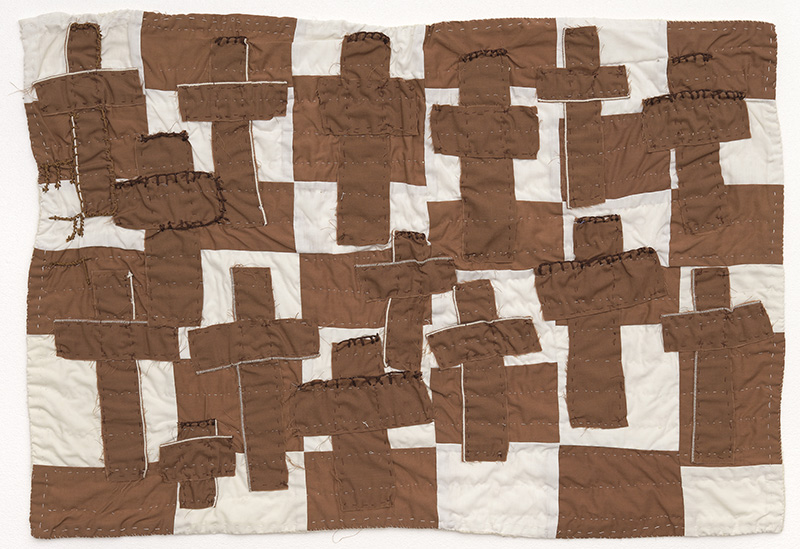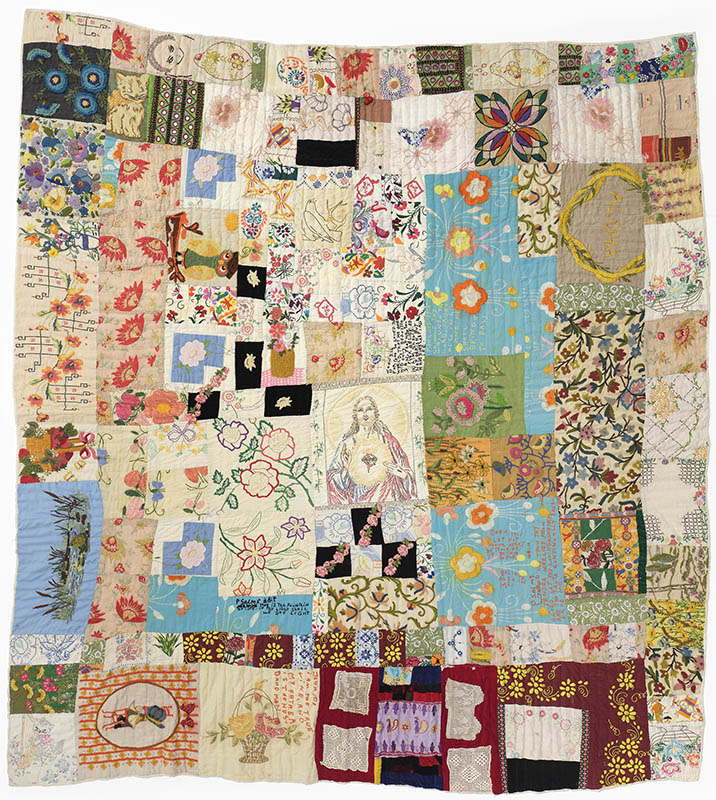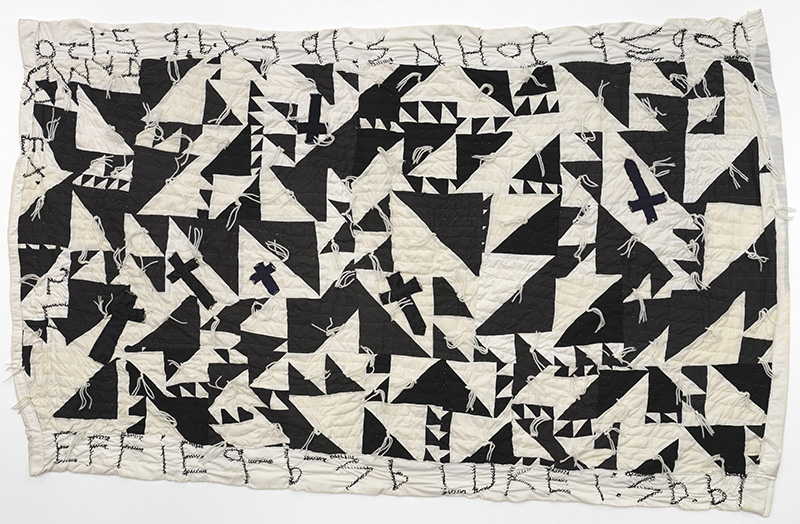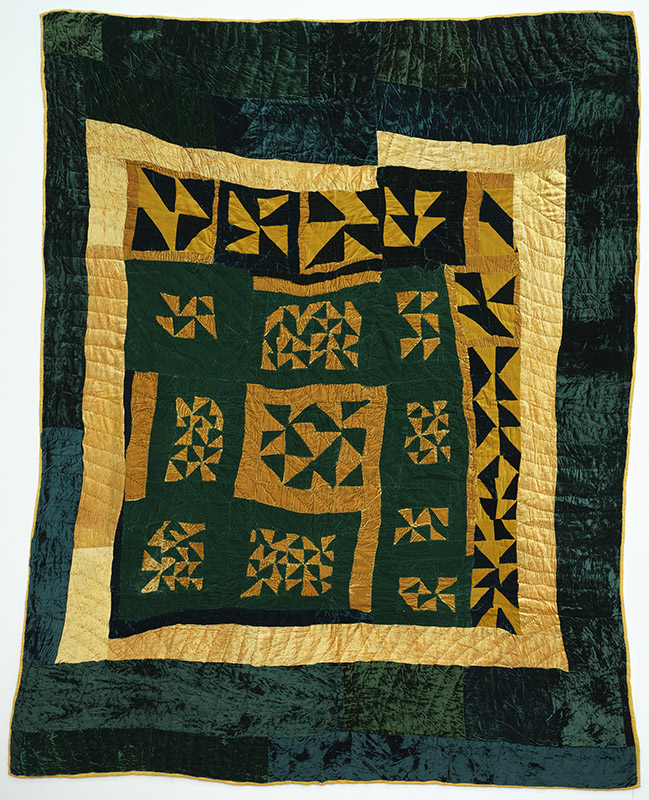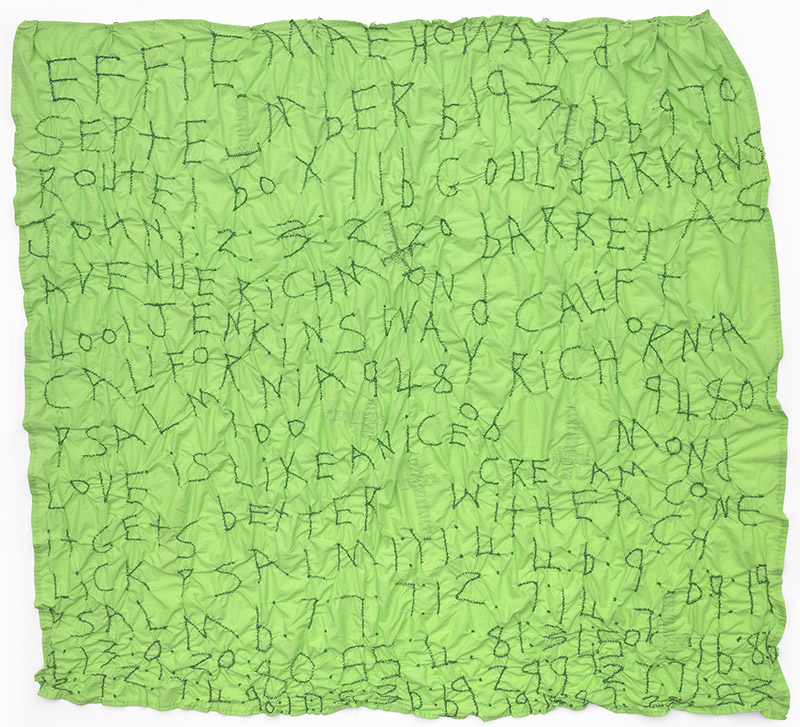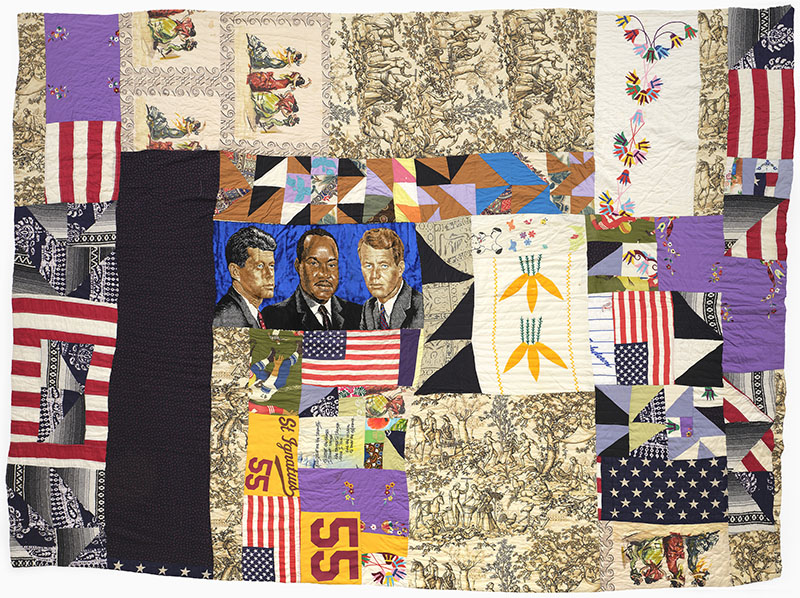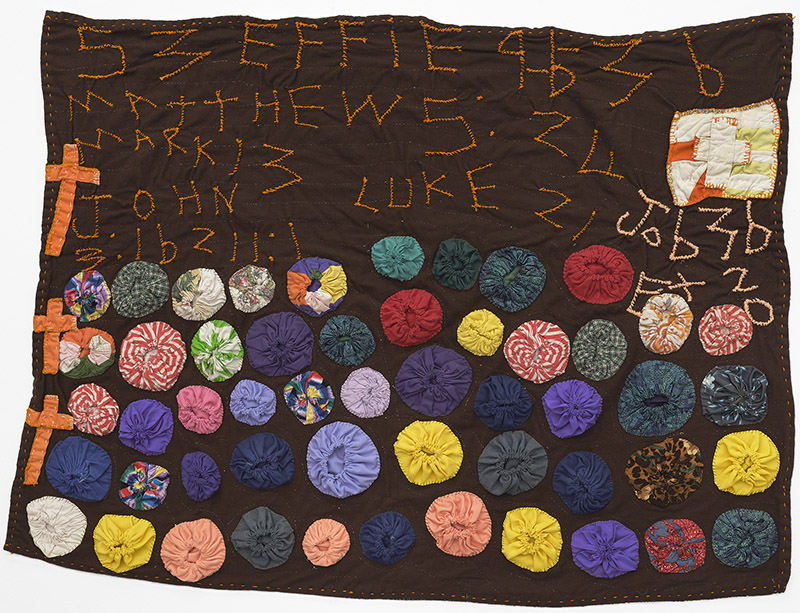The Brilliant Quilts of Rosie Lee Tompkins: A Retrospective at BAMPFA
by Kate Burnett Budzyn
One of the most relevant and sustaining decorative arts exhibitions of the COVID era has been Berkeley Art Museum and Pacific Film Archive (BAMPFA)’s retrospective of the work of Rosie Lee Tompkins (1936-2006), whose prolific body of asymmetrical, vibrantly patterned quilts is one of the most important textile oeuvres of the late 20th century. The show, co-curated by Lawrence Rinder and Elaine Yau, opened in situ at the museum in late February 2020 and closed to the public just a few weeks later as BAMPFA’s temporary (and still ongoing) pandemic closure began. This timing forced the show to go virtual in what is now an exciting opportunity to experience Tompkins’s largest ever retrospective online—and for free—through July 18 of this year.
Tompkins’s works are hard to describe. As Rinder explains in his visually astute hour-plus virtual tour, many of the pieces in the exhibition aren’t technically quilts, which consist of two layers of fabric filled with an insulating material and stitched together, nor were they necessarily made to function as bedcovers. Tompkins’s main interest lay in creating quilt tops, and the finishing work of quilting—the connecting of layers with stitching—was often outsourced to other quilters. (Willia Ette Graham, Johnnie Wade and Irene Bankhead are all credited as makers in the exhibition.) Tompkins’s quilts and pieced tops are irregularly sized and shaped, their scales, color schemes, and design themes varying dramatically. An undated piece in a multicolored checkerboard pattern measures over 10 feet in length, clearly not meant for bed, while a pair of small, appliquéd works on gray wool flannel are closer to devotional objects, measuring just 12 inches across. One object on display is a pieced velvet dress that Tompkins made for herself.
Tompkins’s practice was deeply personal and spiritual. She learned quilting from her mother, and she credited God with her strong artistic connection to it. “I think it’s because I love them so much that God let me see all these different colors,” she once wrote. Christian imagery forms a continuous thread in her work, as do icons of Black identity and culture. Found embroideries of Jesus, appliquéd crosses, images of leaders and stars like Martin Luther King, Jr., and Michael Jordan, and boldly stitched citations of Bible verse all come together to create “a kind of material prayer in needlework,” as Yau puts it in her talk at the show’s opening colloquium. Tompkins sought out materials with a careful attention to their qualities and meanings, correlating colors and numbers with personal and religious experiences, and yet there is an urgency to her pieced designs that cuts against the premeditated rhythms and visual efficiencies of many traditional American quilt patterns.
In a 1986 quilt, a luminous border of gold sateen makes its way around a central medallion of unaligned half-squares in a scheme of deep greens and black velvet, but the border’s ends never meet. A monochrome lime-green polyester cotton quilt top, one of her later works, is covered in appliquéd crosses, but they are made of the same fabric as the backing and therefore disappear into the background, seeming to defy the labor it took to put them there. As contemporary quilt artist and scholar Carolyn Mazloomi points out in “Among Quilters,” an insightful discussion moderated last month by Yau, Tompkins’s spontaneity and expressionistic verve may look effortless but aren’t. “It is not easy to make an improvisational-type quilt,” Mazloomi assures us, comparing Tompkins’s style to the famed tradition of Gee’s Bend quilters. “They require a high degree of skill. It’s not easy putting theses haphazard parts together to make that whole and come out with this fabulous work.”
Whenever I take the time to look closely at quilts, I am struck by how powerfully they serve as a document of time. The hours of work, often undertaken by different hands, become awe-inspiring when one begins to contemplate the individual stitches and then the magnitude of this body of craft that reverberates across generations, both in handed-down objects and in the deeply familiar patterns that are part of the genome of American design.
Tompkins’s quilts reward the careful viewer in an entirely different way. Her practice is more expansive, individualistic and private than it is iterative. She takes up the pieces of quilt tradition—pinwheels, yo-yos, half-squares—and explodes them against a sea of mixed-media found images: a piece of a t-shirt reading “Who Framed OJ Simpson?”; the deconstructed elements of an American flag; patches of sepia-toned toile. It’s as if the medium of quilting itself is just barely fast enough to keep up with Tomkins’s ideas and inspirations, which spread across the plane of her works in a brilliant channeling and remixing of issues of religion, race, gender, national identity and visual tradition. Through the recycled pieces of American craft and consumer culture, Tompkins stitches her way to something uncontained, mysterious, and otherworldly.
I have returned to this exhibition time and time again over the past year, finding myself more and more deeply inspired by how this body of work dismantles and reconstructs the relationship between artistic authorship and craftspersonship. Are Rosie Lee Tompkins’s quilts and pieced tops decorative art? Impartial to functionality and stylistic boundaries, and yet firmly participant in a women-led tradition of handiwork, these objects aren’t terribly interested in material categories. From this space of freedom, they spin us around, point our gaze backwards, and ask us to reconsider what it is that we value in the history of objects that both beautify and document daily life. What does a quilt need to do to be a quilt?
This is a decorative arts retrospective for our time, a virtually accessible show in which a tradition-based artist shows us how to turn inward, channel the urgency of now, keep working—and recast the pieces and patterns of the world we’ve inherited.
Rosie Lee Tompkins: A Retrospective is on view on BAMPFA’s website through July 18, 2021. Digital resources include a virtual tour by co-curator Lawrence Rinder, a digital slideshow, a family guide, and interviews with contemporary quilters and art critics by co-curator Elaine Yau.
Kate Burnett Budzyn is a new contributing writer to The Decorative Arts Trust Bulletin. She researches historic clothing and textiles and is the book review editor at Winterthur Portfolio.
About The Decorative Arts Trust Bulletin
Formerly known as the "blog,” the Bulletin features new research and scholarship, travelogues, book reviews, and museum and gallery exhibitions. The Bulletin complements The Magazine of the Decorative Arts Trust, our biannual members publication.








